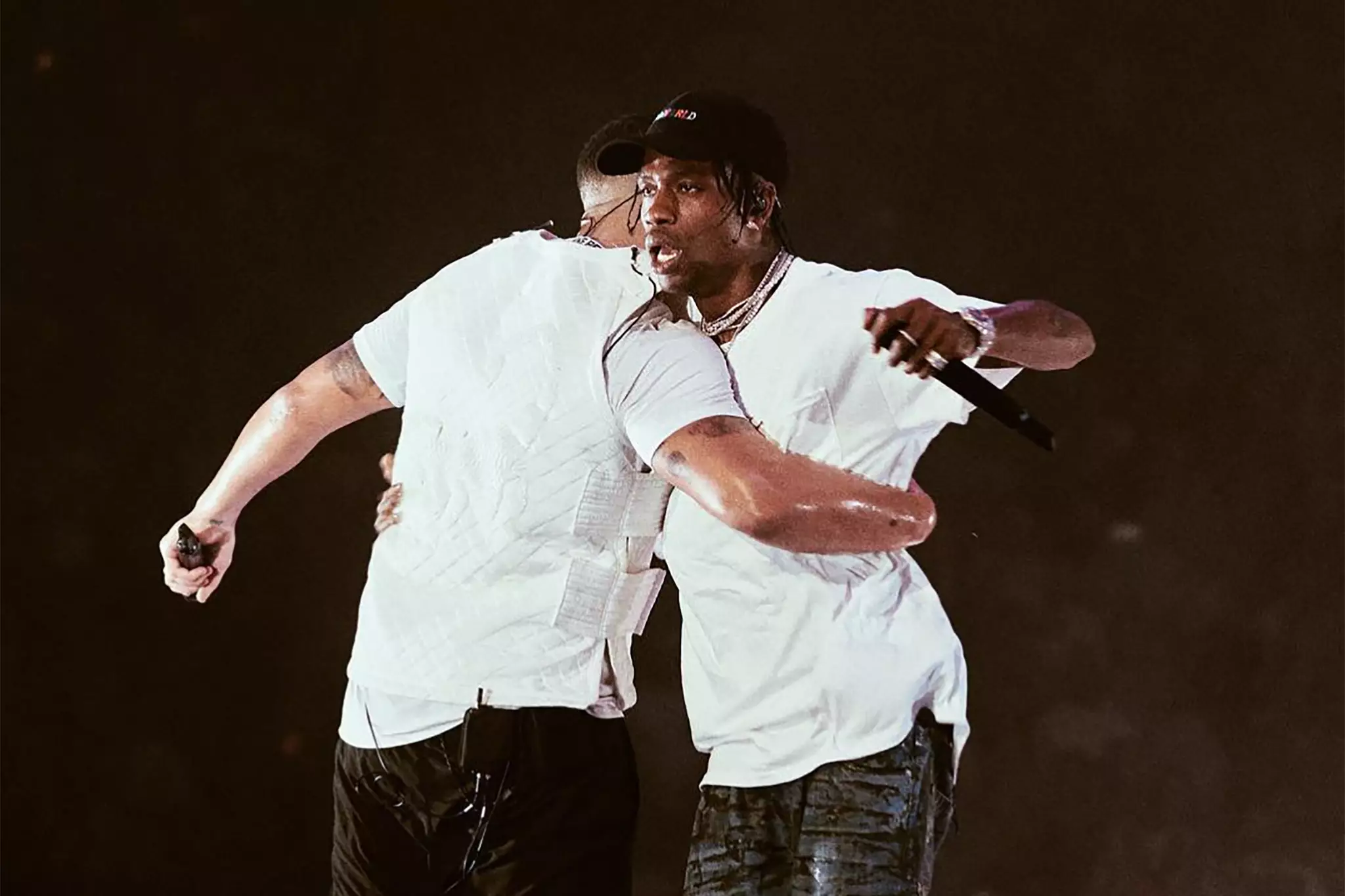Melodies are the heart and soul of music. They are the beautiful, captivating, and memorable tunes that linger in our minds long after the music has stopped playing.
Whether it’s a catchy pop chorus, a haunting hip-hop verse, or a soaring classical refrain, melodies have the power to evoke emotions, tell stories, and transport listeners to different worlds.
In this blog post, we will delve into the art of crafting memorable melodies and explore techniques and strategies to create melodies that leave a lasting impression on the audience.
Understanding Melodic Structure
At the core of any melody lies its structure. Melodies are made up of various elements, including pitch, rhythm, contour, and phrasing. Pitch refers to the highness or lowness of a musical note, and it plays a crucial role in creating melodies that are pleasing to the ear.
Rhythm is the pattern of notes and rests that give a melody its sense of timing and groove. Contour refers to the shape or direction of a melody, which can be ascending, descending, or undulating.
Phrasing involves dividing a melody into smaller sections, such as phrases and motifs, which contribute to its overall structure and flow.
In hip-hop culture, melodies often take center stage in the form of rap verses. Rappers use their vocal delivery to create memorable melodies by carefully selecting pitches, rhythms, and contours that complement their lyrics and convey their message.
For example, in Kendrick Lamar’s “HUMBLE.,” the repetitive and rhythmic melody of the chorus (“Sit down, be humble”) creates a catchy and memorable hook that adds to the overall impact of the song.
Tapping into Melodic Inspiration
Finding inspiration for melodies can come from various sources. Drawing from personal experiences, emotions, nature, and other music can all spark melodic ideas. Many memorable melodies have been inspired by everyday life experiences or emotions.
For instance, in Ed Sheeran’s “Photograph,” the melody of the chorus (“So you can keep me inside the pocket of your ripped jeans”) is inspired by a personal photograph that triggers nostalgic emotions, making it relatable and memorable to listeners.
In hip-hop culture, producers often sample melodies from existing songs to create new beats. Sampling involves taking a portion of a pre-recorded melody and incorporating it into a new composition.
This technique has been widely used in hip-hop, where iconic melodies from various genres, such as soul, funk, and R&B, are sampled to create fresh and memorable melodies.
Kanye West’s “Stronger,” the melody of the chorus is sampled from Daft Punk’s “Harder, Better, Faster, Stronger,” giving the song a catchy and recognizable hook.
Melodic Techniques and Strategies
There are numerous techniques and strategies that can be employed to create memorable melodies.
Experimenting with different scales and modes can add unique flavors to melodies. For example, using the pentatonic scale can create a sense of simplicity and accessibility, while employing the harmonic minor scale can infuse melodies with a haunting and exotic quality.
Producers often manipulate scales and modes to create distinctive and memorable melodies that complement the beats and lyrics.
Intervals, leaps, and steps can also be utilized to add interest and emotion to melodies. Intervals refer to the distance between two pitches, and using different intervals can create varying degrees of tension and release in melodies.
Leaps involve large jumps between pitches, which can create excitement and surprise in melodies, while steps involve small movements, which can create smooth and flowing melodies.
Ariana Grande’s “No Tears Left to Cry,” the use of large leaps in the melody during the chorus (“Ain’t got no tears left to cry, so I’m pickin’ it up, pickin’ it up”) adds a sense of empowerment and resilience to the song.
Repetition is another powerful technique in crafting memorable melodies. Repeating melodic phrases or motifs can create a sense of familiarity and catchiness, making the melody stick in the listener’s mind.
Many popular songs rely on repetitive melodies in their hooks, such as Billie Eilish’s “Bad Guy” or The Weeknd’s “Blinding Lights,” which have simple but memorable melodic hooks that are repeated throughout the songs, creating a lasting impact on listeners.
In hip-hop, syncopation is often used to create memorable melodies. Syncopation involves placing accents or stresses on off-beats, creating unexpected rhythms that add complexity and groove to melodies.
This technique can make melodies stand out and leave a lasting impression. For example, in Drake’s “God’s Plan,” the syncopated melody in the verses (“I been movin’ calm, don’t start no trouble with me”) adds a unique and memorable rhythmic pattern to the song.
Crafting Melodies that Tell a Story
Melodies can also be used to convey emotions, tell stories, and paint vivid imagery in the listener’s mind. Crafting melodies that have a narrative quality can create a deep emotional connection with the audience.
Many iconic melodies have been used to tell stories, such as John Lennon’s “Imagine,” which conveys a message of hope and peace through its evocative melody.
Storytelling is often a central element of rap verses. Rappers use their melodies to convey their personal experiences, struggles, and triumphs, creating powerful and memorable narratives.
In Tupac Shakur’s “Changes,” the melody in the verses (“I see no changes, wake up in the morning and I ask myself”) conveys a sense of frustration and reflection, adding emotional depth to the lyrics and making the song resonate with listeners.
Experimenting with Different Musical Styles
Exploring different musical styles can also inspire and enrich melodies. Mixing genres, borrowing from different musical traditions, or creating hybrid styles can result in unique and memorable melodies.
Many successful songs have blended different genres to create fresh and innovative melodies. For example, in Justin Timberlake’s “Can’t Stop the Feeling!,” the fusion of pop, funk, and disco elements in the melody creates a catchy and danceable hook that appeals to a wide audience.
Music producers often incorporate melodies from diverse musical traditions, such as jazz, funk, or world music, to create distinct and memorable melodies. This blending of musical styles adds depth and richness to hip-hop tracks and contributes to the genre’s creativity and innovation.
In J Cole’s “Power Trip,” the melody samples the chorus from TLC’s “Creep,” adding a nostalgic and soulful quality to the song that resonates with listeners.
Collaborating with Others
Collaboration can be a powerful tool in crafting memorable melodies. Working with other musicians, songwriters, or producers can bring fresh perspectives, ideas, and talents to the creative process.
Collaborators can contribute unique melodic ideas, suggest different approaches, or provide feedback that can elevate the quality of the melodies.
Many successful songs have been the result of collaborative efforts. For example, in Beyoncé’s “Crazy in Love,” the catchy melody of the chorus (“Got me looking so crazy right now, your love’s got me lookin’ so crazy right now”) was co-written by Beyoncé, Rich Harrison, and Shawn Carter (Jay-Z), and their collaboration resulted in a memorable and iconic melody.
In hip-hop culture, collaborations between artists, producers, and songwriters are common and often lead to the creation of memorable melodies.

Drake and Travis Scott perform SICKO MODE on the Aubrey & The Three Amigos Tour
For example, in the hit song “Sicko Mode” by Travis Scott featuring Drake, the collaboration between the two artists resulted in a unique and captivating melody that switches between different styles and tempos, creating an unforgettable listening experience.
Check out: The Role of Collaboration in Music
Drawing Inspiration from Cultural and Social Issues
Melodies can also be used to convey deeper messages and comment on cultural and social issues. Drawing inspiration from current events, personal experiences, or social commentary can result in melodies that are not only memorable but also impactful and thought-provoking.
Many artists have used their melodies to address social and cultural issues. For example, in Kendrick Lamar’s “Alright,” the melody in the chorus (“If God got us, then we gon’ be alright”) serves as an anthem of resilience and hope in the face of racial discrimination and social injustices.
The powerful and memorable melody reinforces the song’s message and makes it a memorable and impactful piece of music.
Melodies are often used to address personal struggles, social inequality, and other pressing issues. For instance, in Childish Gambino’s “This Is America,” the contrasting melodies in the verses and chorus create a sense of tension and unease, reflecting the song’s critical commentary on gun violence and racism in America.
The powerful and memorable melodies enhance the impact of the song’s message and make it resonate with listeners.
Creating Melodies with Emotional Authenticity
One of the key factors in crafting memorable melodies is emotional authenticity.
Melodies that are genuinely felt and expressed by the artist can create a deep emotional connection with the audience. Authentic melodies are often born out of personal experiences, emotions, and vulnerabilities, which make them relatable and resonant.
Adele’s “Someone Like You,” the raw and vulnerable melody in the chorus (“Nevermind, I’ll find someone like you”) captures the heartbreak and longing of lost love, making it a memorable and emotionally resonant song.
In hip-hop culture, authenticity is highly valued, and many artists use their melodies to express their personal struggles, emotions, and vulnerabilities.
In Kanye West’s “Runaway,” the haunting and introspective melody in the chorus (“Let’s have a toast for the douchebags, let’s have a toast for the assholes”) is a candid expression of self-awareness and self-criticism, making the song a powerful and memorable statement on fame and ego in the music industry.
Check out: How to Develop a Strong Musical Identity
Using Technology to Enhance Melodies
Advancements in technology have also revolutionized the process of crafting melodies. With the availability of modern music production tools, artists and producers have more creative freedom and flexibility in shaping melodies to their liking.
From MIDI controllers to virtual instruments to digital audio workstations (DAWs), technology has opened up new possibilities for crafting unique and memorable melodies.
Technology plays a crucial role in creating memorable melodies. Producers often use virtual instruments and samples to create unique and innovative melodies that define the sound of hip-hop tracks.
For instance, in Drake’s “Hotline Bling,” the iconic and addictive melody in the verses (“You used to call me on my cellphone, late night when you need my love”) was created using a synthesizer, adding a modern and futuristic touch to the song.
Protecting Melodies with Copyright
As melodies are valuable and integral parts of music, it is essential for artists to protect their melodies through copyright.
Copyright is a legal mechanism that provides exclusive rights to the original creator of a work, including melodies, and prevents others from using, copying, or profiting from their creations without permission.
Registering melodies with the relevant copyright authorities help artists establish ownership and provides legal recourse in case of infringement.
One notable example is the copyright dispute between Robin Thicke, Pharrell Williams, and the estate of Marvin Gaye over the hit song “Blurred Lines.”
The court ruled that the song’s melody was too similar to Marvin Gaye’s “Got to Give It Up” and awarded damages to the Gaye estate, highlighting the importance of protecting melodies and respecting intellectual property rights in music.
In hip-hop, copyright infringement cases related to melodies have also been prevalent. The use of unauthorized samples from existing songs in hip-hop tracks has led to numerous copyright disputes.
In some cases, artists and producers have been required to obtain proper permissions or pay royalties for the use of melodies from other works. These cases highlight the need for hip-hop artists and producers to be mindful of copyright laws and obtain proper clearance for the use of melodies in their music.
Conclusion
Melodies are the backbone of music, providing the foundation for memorable and impactful songs. Whether in pop culture or hip-hop culture, melodies play a crucial role in creating chart-topping hits, conveying emotions and messages, and defining the sound of a genre.
Through the use of musical theory, inspiration from cultural and social issues, emotional authenticity, and technology, artists and producers can craft melodies that captivate listeners and leave a lasting impression.
However, it is important to acknowledge the complexities and challenges involved in creating melodies, such as the subjective nature of music and the legal issues surrounding copyright.
As artists continue to push the boundaries of creativity in music, it is essential to respect intellectual property rights, obtain proper permissions and clearances, and ensure that melodies are original and not copied from existing works.
Ultimately, the art of crafting memorable melodies in music is a multifaceted process that requires skill, creativity, and authenticity. From the early days of music to the modern era of technology-driven production, melodies have remained a fundamental element of music that captivates and resonates with listeners.
As music continues to evolve, the power of melodies in pop culture and hip-hop culture will continue to shape the landscape of the music industry and leave a lasting impact on audiences worldwide.






